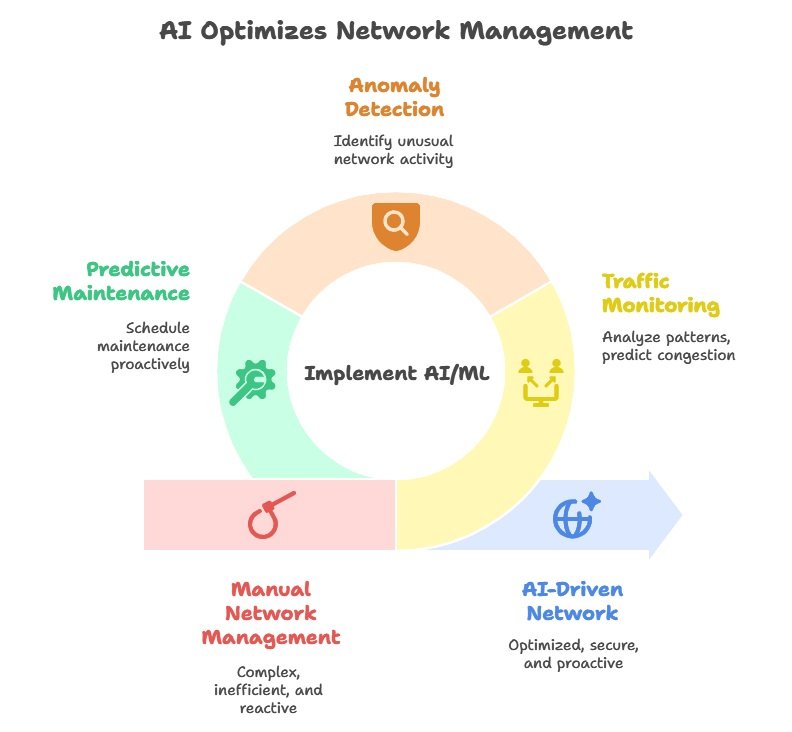The world of networking has evolved rapidly, reshaping how people, businesses, and devices communicate. What once relied on static connections and bulky infrastructure has transformed into a flexible, intelligent system that powers everything from cloud computing to smart cities.
Modern networking technology is no longer just about connecting devices, it’s about enabling efficiency, security, and scalability on a global scale. As digital transformation accelerates, key innovations are redefining the way data moves, how businesses operate, and how users experience connectivity in real time.

The Rise of Software-Defined Networking (SDN) and SD-WAN
Traditional networking relied heavily on physical hardware and manual configuration. This limited flexibility, slowed response times, and made large-scale management complex. Software-Defined Networking (SDN) changed that by decoupling network control from the hardware layer. Instead of configuring routers and switches individually, administrators can manage entire networks through centralized software platforms. This flexibility allows for faster adaptation, automated management, and improved visibility across networks.
Building on SDN principles, Software-Defined Wide Area Networking (SD-WAN) has become one of the most transformative technologies in enterprise connectivity. Companies increasingly ask how does SD-WAN work for secure connectivity as they move toward distributed and cloud-based infrastructures. SD-WAN intelligently routes traffic across multiple connection types, such as broadband, 4G/5G, and MPLS, based on real-time performance data. It prioritizes mission-critical applications while maintaining encryption and policy enforcement, ensuring that users experience consistent security and speed regardless of location.
The Integration of AI and Machine Learning in Network Management
As networks grow more complex, managing them manually has become nearly impossible. Artificial intelligence (AI) and machine learning (ML) now play crucial roles in optimizing performance and detecting issues before they escalate. AI-driven analytics can monitor traffic patterns, predict congestion, and automatically reroute data to maintain efficiency.
Machine learning models continuously learn from network activity, improving security and automation. This intelligence helps detect anomalies, such as unusual login attempts or data transfer spikes, that might indicate cyber threats. AI-assisted systems can predict equipment failures and schedule maintenance proactively, reducing downtime and improving service quality.

Edge Computing and the Need for Real-Time Data
The rise of Internet of Things (IoT) devices and high-speed applications has created a massive demand for low-latency processing. Edge computing addresses this by bringing computation closer to where data is generated. Instead of sending all information to centralized cloud servers, edge devices process critical data locally, reducing delays and bandwidth consumption.
This shift supports emerging technologies like autonomous vehicles, industrial automation, and augmented reality, which require instant responses. Edge networks enhance reliability by reducing dependence on remote servers. If a connection to the cloud fails, local nodes can continue functioning independently until service is restored.
Advancements in Network Security and Zero Trust Models
As networks expand and remote work becomes standard, securing data across multiple endpoints has become increasingly complex. Traditional perimeter-based security models no longer suffice, as threats can originate from inside or outside the network. The Zero Trust model addresses this challenge by eliminating the assumption of trust, every access request must be verified, regardless of location or user identity.
Zero Trust frameworks use continuous authentication, micro-segmentation, and behavior monitoring to ensure that users and devices have only the permissions necessary to perform their tasks. Combined with encrypted communications and AI-driven monitoring, this approach strengthens protection against breaches and insider threats.
The Role of 5G in Expanding Network Capabilities
The rollout of 5G represents a fundamental shift in wireless networking, providing unprecedented speed, capacity, and responsiveness. Compared to 4G, 5G networks offer latency as low as one millisecond, supporting real-time applications like remote surgery, connected vehicles, and smart manufacturing.
For businesses, 5G opens opportunities to deploy IoT devices and edge computing nodes without the constraints of wired infrastructure. Its higher bandwidth supports more devices simultaneously, while network slicing technology allows operators to allocate dedicated resources for specific applications. This ensures optimal performance for critical operations while maintaining network efficiency.
Cloud Networking and the Power of Collaboration
Cloud networking has become the lifeblood of digital collaboration. It connects applications, services, and users across geographies, enabling seamless access to shared resources. Businesses rely on cloud infrastructure to host applications, manage workloads, and support remote teams. The ability to scale resources instantly ensures consistent performance even during peak demand.
Modern cloud networking emphasizes integration between public, private, and hybrid models. This flexibility allows organizations to balance cost efficiency with control and compliance. Cloud-native tools enhance communication and project management, fostering collaboration across teams, partners, and clients.
As security and performance technologies evolve, cloud networks are becoming faster and more reliable. Encryption, intelligent routing, and multi-cloud connectivity ensure that data moves efficiently while remaining protected. In today’s digital-first economy, cloud networking is not just a convenience, it’s a competitive necessity.
The evolution of networking is far from over, it’s accelerating. From AI-driven analytics to SD-WAN and edge computing, each innovation brings the world closer to seamless global connectivity. The networks of tomorrow will connect devices and empower people, industries, and ideas to thrive in an increasingly digital world.








